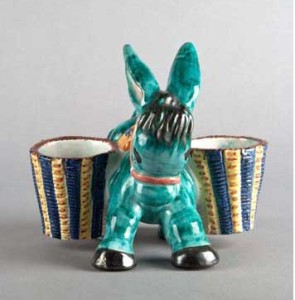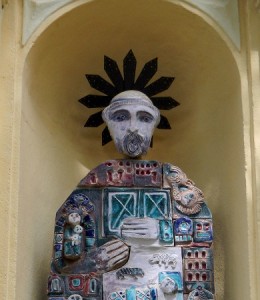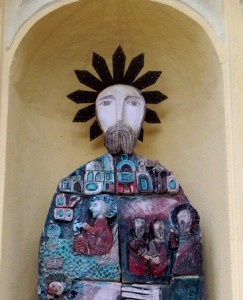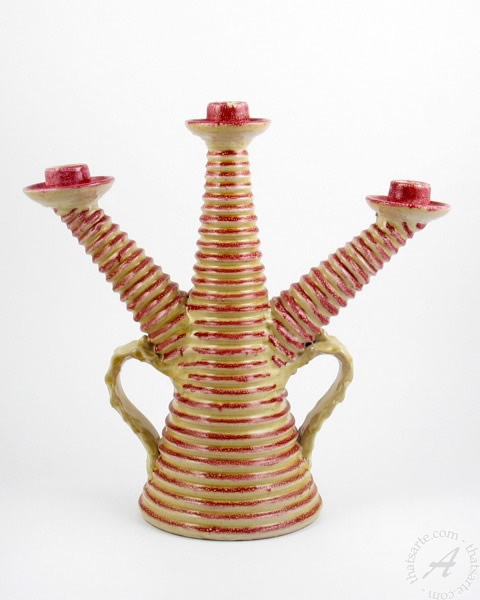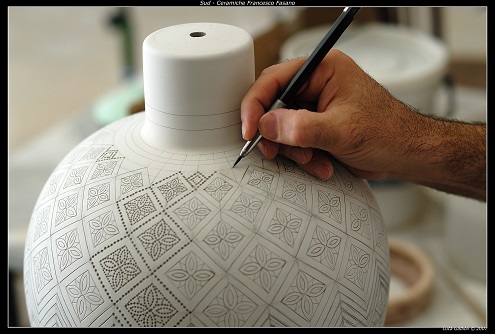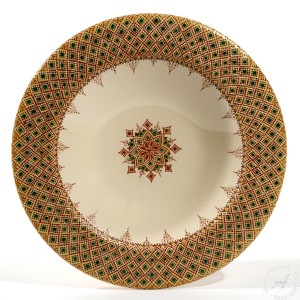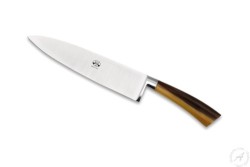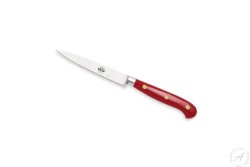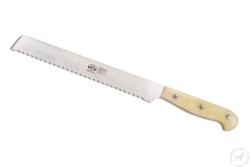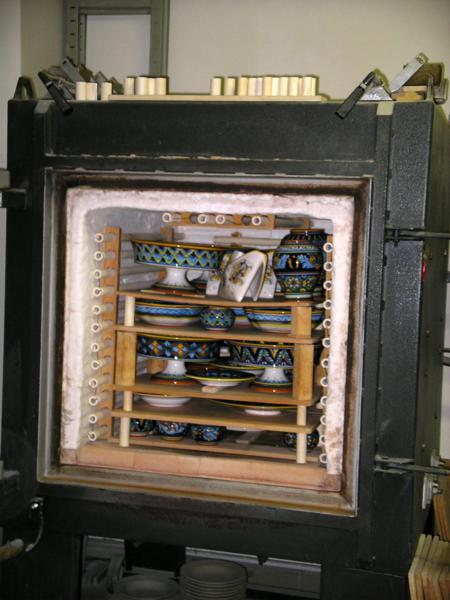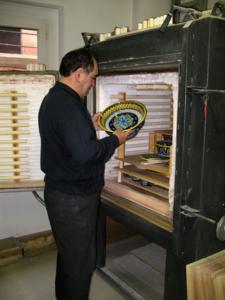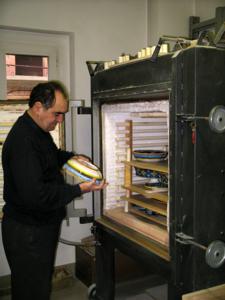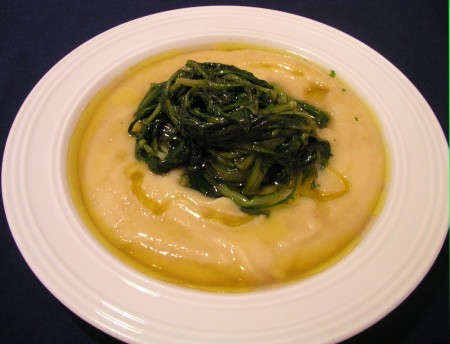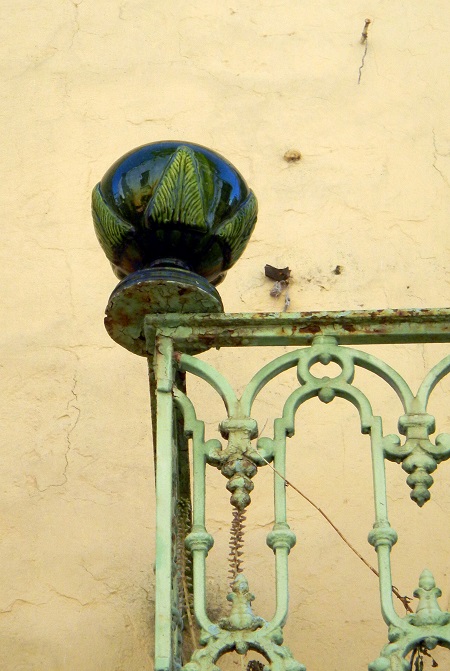 A pumo is popular symbol of good luck in Grottaglie and more in general in the region of Puglia. Every family celebration and important event is sanctified by the gift of a ceramic pumo, rigorously handmade.
A pumo is popular symbol of good luck in Grottaglie and more in general in the region of Puglia. Every family celebration and important event is sanctified by the gift of a ceramic pumo, rigorously handmade.
Its name, from the local dialect “Pumo de’ fiure”, means flower bud and it derives from the Latin “pomum” from Pomona, from Pomona, the Roman Goddess of fruitful abundance. The bud is round, with a slightly pointed end, and it rests on acanthus leaves, symbols of immortality or, if you will, resurrection.
As you can see the references to good luck are endless, explaining the popularity of the pumi: there is always a good reason to purchase a pumo or give it as a gift to wish someone a good start in a new activity. Typically, a new family will not move its first steps in the community without its brand new pumi, installed at every corner of every balcony of the new nest.
Wandering in the steep streets of Grottaglie and the neighboring villages, you’ll find yourself unable to keep your eyes at ground level: the show is on the first and second floors, where the whitish buildings boast their beautiful balconies with colorful pumi’s on each corner. You will see majestic palaces, once owned by noble families, decorated with elaborate pumi, modest houses taking pride on their simple ceramic buds, each having found its distinctive symbol of prosperity, fertility and abundance.
Pumi are made by hand by Grottaglie potters in a large variety of styles and sizes: you’ll find simple, solid colored traditional pumi as well as colorful, fancy ones. Follow your taste and bring one home, they are beautiful interior decoration accents, indoor and outdoor and … we all need good luck, don’t we?
By Tiziana Manzetti
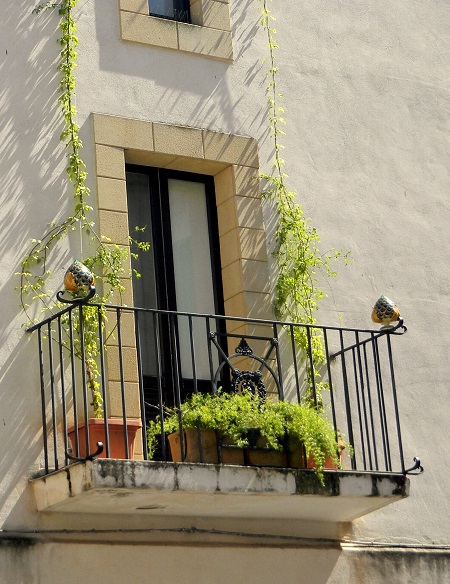 Continue reading →
Continue reading →
 They were sold in special packs with chocolates, Easter eggs (our Easter eggs are pretty big) and the timeless Baci – don’t tell us you know nothing about Baci …
They were sold in special packs with chocolates, Easter eggs (our Easter eggs are pretty big) and the timeless Baci – don’t tell us you know nothing about Baci …
